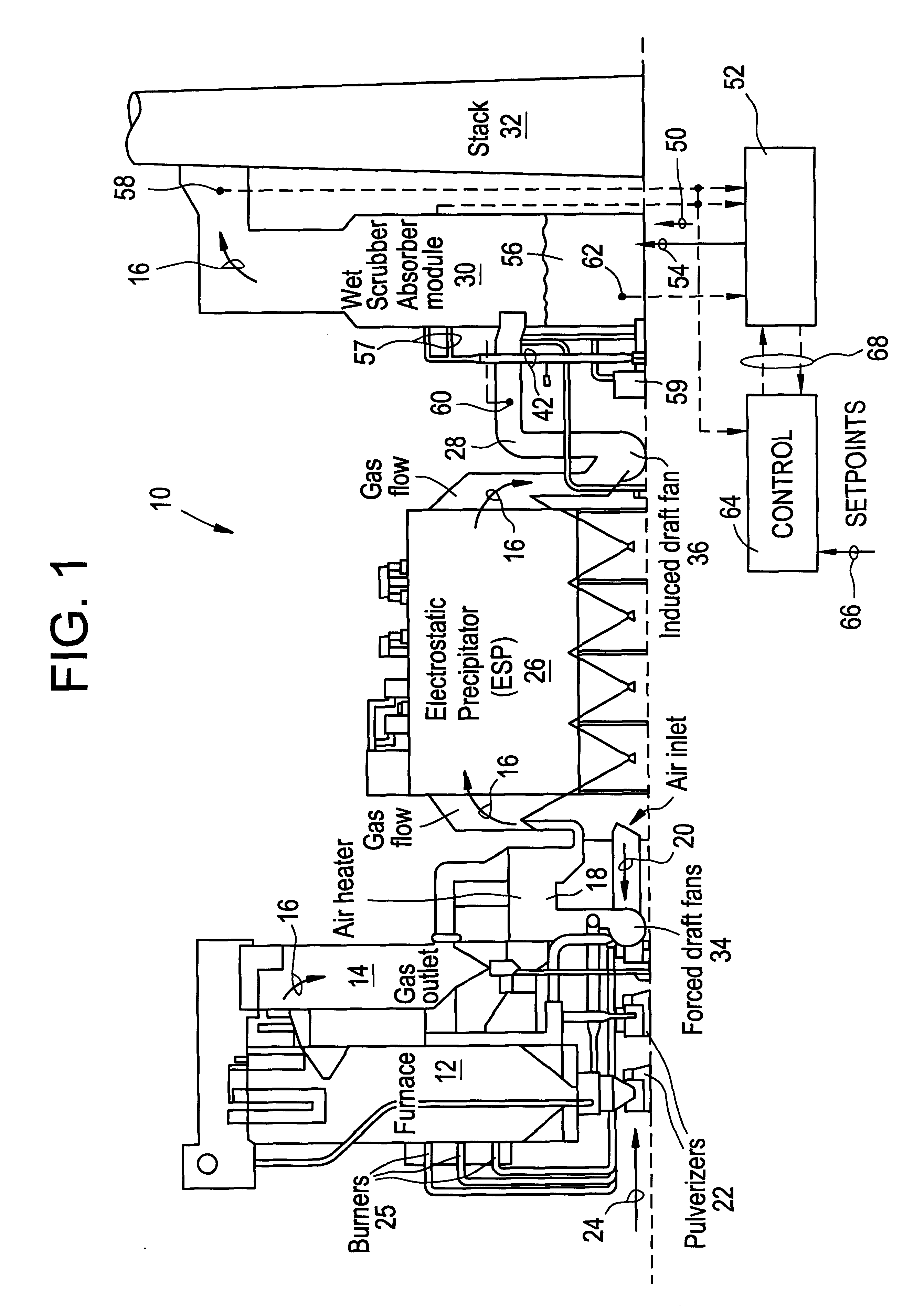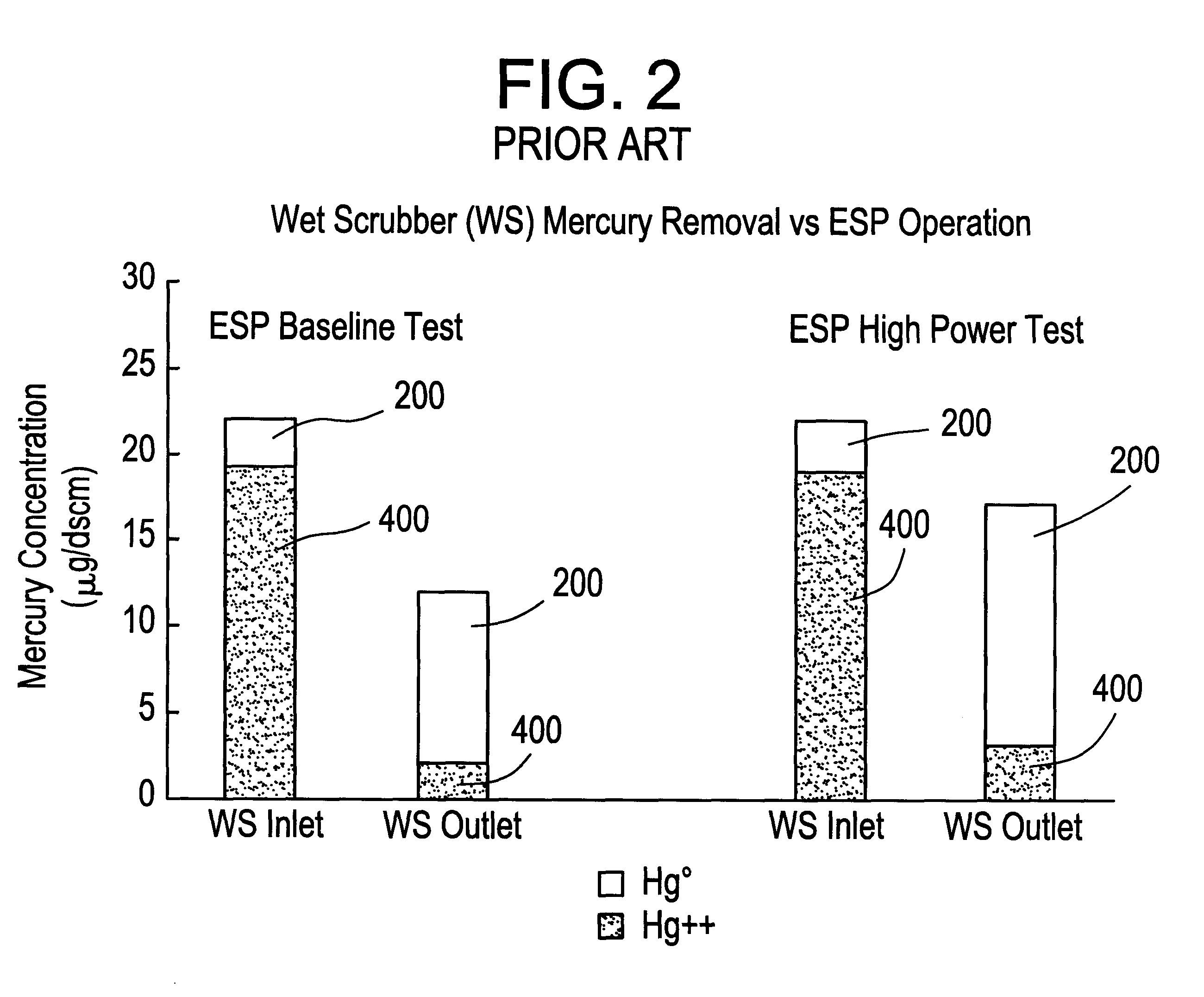Mercury removal in utility wet scrubber using a chelating agent
a technology of mercury removal and chelating agent, which is applied in the direction of chemistry apparatus and processes, separation processes, dispersed particle separation, etc., can solve the problems of difficult capture of hg.sup.0, inability to collect and dispose of along with fly ash,
- Summary
- Abstract
- Description
- Claims
- Application Information
AI Technical Summary
Benefits of technology
Problems solved by technology
Method used
Image
Examples
Embodiment Construction
Chelating agents are known to sequester transition metals, however, in the thick chemical soup that describes wet scrubber slurry, the action of a chelating agent could not be predicted. The chemistry of limestone scrubbing is very complicated due to the many species present at equilibrium. The flue gas and limestone, plus fly ash from coal-burning boilers, each contribute several constituents that affect the chemical makeup of the system. SO.sub.2, SO.sub.3, CO.sub.2, O.sub.2, NO and NO.sub.2 originate from the flue gas; K, Cl, Fe, and other chemicals arrive with the fly ash; and the limestone contains Ca, Mg and several other minor constituents such as Na and K. Therefore, a chelating agent, ethylenediaminetetraacetic acid (EDTA), was added to the reaction tank of a pilot-scale wet scrubber, and mercury concentration was measured at the inlet and outlet of the wet scrubber.
The test was conducted at the McDermott Technology, Inc., pilot-scale, Clean Environment Development Facility...
PUM
| Property | Measurement | Unit |
|---|---|---|
| Fraction | aaaaa | aaaaa |
| Fraction | aaaaa | aaaaa |
| Concentration | aaaaa | aaaaa |
Abstract
Description
Claims
Application Information
 Login to View More
Login to View More - R&D
- Intellectual Property
- Life Sciences
- Materials
- Tech Scout
- Unparalleled Data Quality
- Higher Quality Content
- 60% Fewer Hallucinations
Browse by: Latest US Patents, China's latest patents, Technical Efficacy Thesaurus, Application Domain, Technology Topic, Popular Technical Reports.
© 2025 PatSnap. All rights reserved.Legal|Privacy policy|Modern Slavery Act Transparency Statement|Sitemap|About US| Contact US: help@patsnap.com



